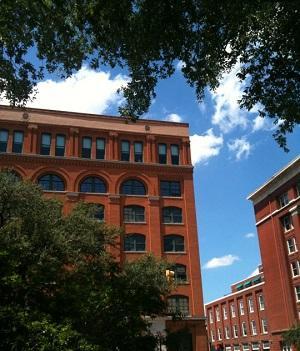
One of the things I really love about the Internet as an adult is the access to information. I spoke about it last week, how I’ve used the Internet to learn about weather. YouTube gets a lot of credit for funny animal videos but I want to take a moment to remind everyone that YouTube has become a historical video archive while we were all busy figuring out what the fox says.
I was always a geeky kid - interested in things like the weather and history. How many kids think Santa is the greatest because he brought you Encyclopedia Britannica on CD-ROM? What a lot of people don’t know about me is that I got a minor in history in college, almost enough credits to double major.
As a child and I was learning things, it was the “big events” that fascinated me. None so much like the assassination of JFK. I often asked my dad to tell me about it. He doesn’t remember much, but he remembers sitting in his 3rd grade class, when one teacher came in crying. She whispered to my dad’s teacher, and then they both left the room crying. The same goes for his mother - he remembers going home from school and seeing her crying too. After September 11th, 2001, I came to this strange realization that my children would one day ask me to tell the story of “where I was” over and over again. As I started to compare the two events in terms of importance, I started to look at the reporting between the two events and noticed interesting differences about the journalism.
(Mostly) Zero Sensationalism
Listen to any of the live coverage you can find on YouTube for “as it happened” and the thing that lacks versus a “national” event of today is the sensationalism. A lot of that is due to the time it took for information to travel. If you’ve ever been to the Texas Book Depository Museum (do it!) you’ll see the AP wire that came across, announcing the death of JFK. With time between reports, there was time that these details could be confirmed, vetted. Today, social media is used to find “breaking” and “real time” reports and they are often reported as true.
It Was a Pioneering Day of Live Journalism
When the reports first broke into soap operas and commercials for laundry detergent, most “big” affiliates reported the the President has been shot and would return to regular programming. At WFAA here in Dallas, Texas they went live, read a bulletin, and never left the air. The WFAA broadcast offices are just a few blocks south of where the assassination happened. Jay Watson ran back to the studio and interrupted the regular program - still out of breath from his sprint as he delivered the news. (Watch the landmark footage - it’s absolute chaos in the most amazing and professional way.)
If you ever visit Dallas, I highly recommend the visitation to the Texas Book Depository. The infamous floor where Lee Harvey Oswald took the shot is a a museum now, with lots of Kennedy artifacts. You can also go up to the top floor and look down to the street, giving you an almost exact view of what Oslwald would have seen. Just wandering around Dealey Plaza leaves a heavy feeling in your heart though, no matter how old you are.
Have you ever stopped to wonder what the reporting would have been like on that day if social media had played a part? Do you think reporting would have been different or the same?

